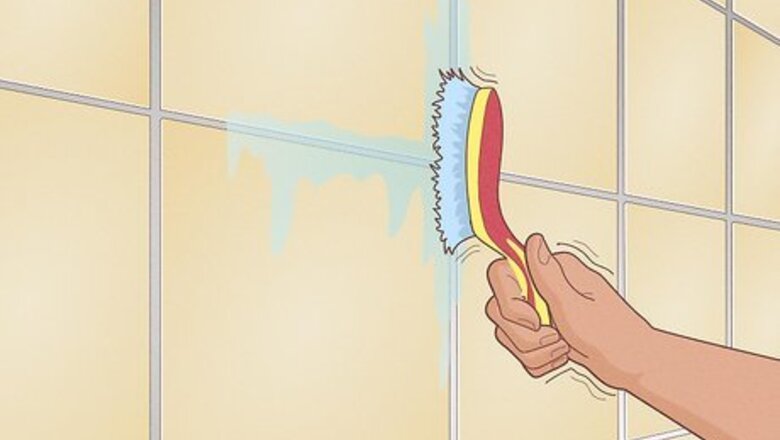
views
Cleaning Dirty Grout
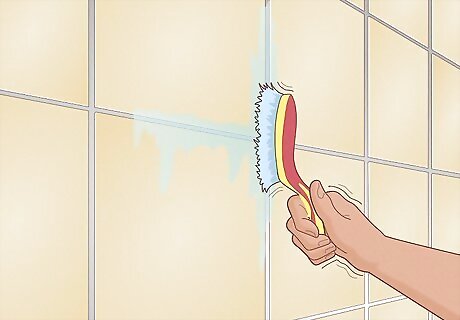
Start with warm water and a nylon brush. Sometimes, a little bit of water and elbow grease is all you need. Simply spray some warm water onto the grout, then scrub it with a stiff-bristled brush using a circular motion. This might be enough to get rid of light surface dirt, and reveal the white grout underneath. For heavier stains, add a few drops of dish soap into the warm water. Try to get a brush made specifically for cleaning grout. If you can't find one, an old toothbrush or a manicure brush will also work. Don't use a wire brush, however, as it can ruin the grout.
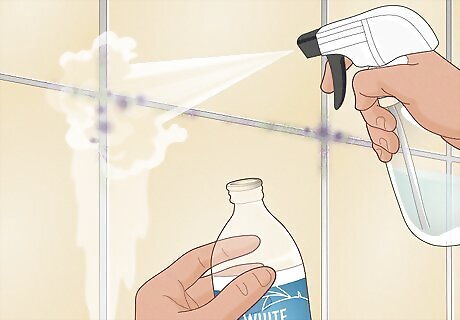
Use a water-vinegar solution for mildew stains. Fill a spray bottle with 1 part white vinegar, and 1 part warm water. Spray this mixture onto the strained areas, wait 5 minutes, then scrub it off using a stiff-bristled brush. If needed, rinse the area with warm water. Don't use this if your tiles are made out of marble or other natural stones. Vinegar can damage these materials.
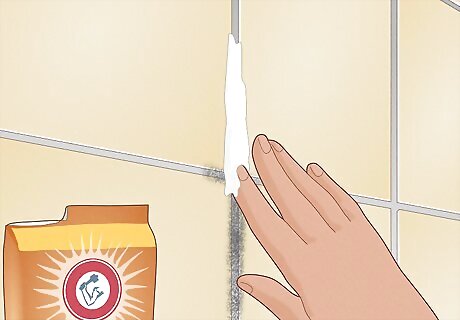
Use a paste made from baking soda and water on heavier stains. Mix enough water into some baking soda to form a thick paste. Spread this paste onto the affected area. Scrub the area with a stiff-bristled brush, then rinse with warm water. You can also spray the baking soda paste with a mixture of one part water, and one part white vinegar mixture. Once it stops fizzing and foaming, scrub the area using a stiff bristled brush.
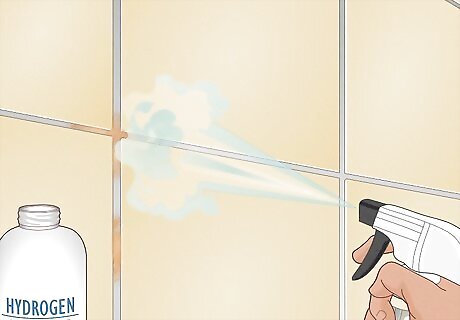
Use hydrogen peroxide on tough stains. You can spray hydrogen peroxide straight onto the stained area, or you can make a paste using baking soda. Once you have the hydrogen peroxide on the grout, wait a few minutes, then scrub it using a stiff-bristled brush. Rinse the area using water when you are done. Hydrogen peroxide works great on blood stains.
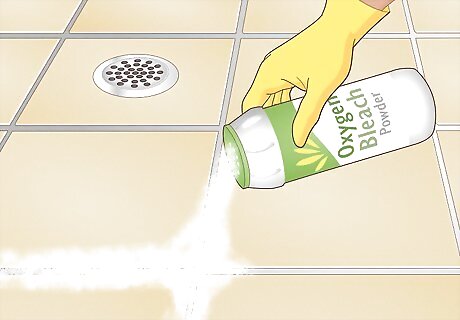
Use store-bought "oxygen bleach" cleaners. Look for products that say they will work on grout, or that say "oxygen bleach" on them. Turn on the bathroom fan or open a window, and put on a pair of rubber gloves. Use the product according to the instructions. Most products will need to sit on the grout for 10 to 15 minutes, and then you will need to scrub them using a stiff-bristled brush. When you are done, rinse the cleaner off with warm water. Common brands include: Biokleen Oxygen Bleach Plus, Clorox, OxiClean, and OxiMagic.
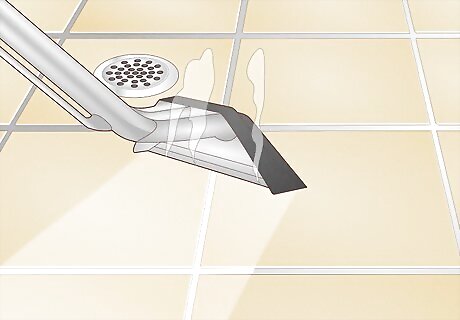
Steam your grout back to its original white. Begin with the steam pressure set to the lowest setting, and work up to a higher setting if necessary. Use the brush attachment for stubborn stains. Steam cleaning does not use any cleaners at all. Instead, it uses steam and pressure to "blast" dirt and grime away.
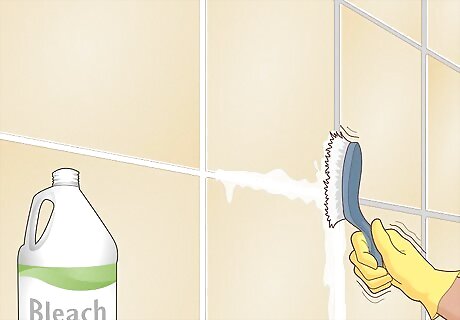
Use bleach diluted with water in extreme cases. Turn on the bathroom fan or open up a window. Put on a pair of rubber gloves, safety goggles, and some old clothes. Next, fill a spray bottle with 1 part bleach and 10 parts water. Spray the mixture onto the dirty grout and wait 2 minutes. Scrub the area using a stiff-bristled brush, then rinse with water. Use bleach with care if your bathtub is made from porcelain. Bleach can cause porcelain to turn yellow or become pitted.
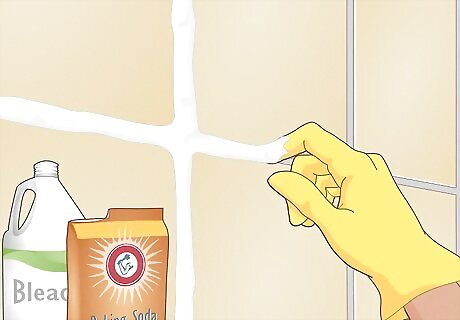
Try a baking soda and bleach paste for extreme cases. Mix 2 parts baking soda and 1 part bleach to make a thick paste. Spread this paste onto the dirty grout and wait 5 to 10 minutes. Scrub the grout using a stiff-bristled brush, then wait another 5 to 10 minutes. Once the time is up, rinse the paste off using water. While mixing bleach with other chemicals is a bad idea, mixing bleach with baking soda is considered safe. Many people find that this actually helps improve the cleaning properties of both the bleach and the baking soda.
Painting Grout White
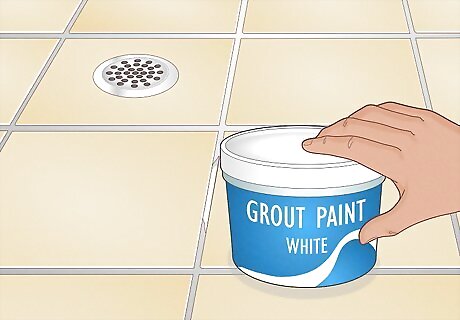
Buy some white grout paint. You can find white grout paint in a hardware store or a home improvement store. You may also find it labeled as "grout colorant." It usually contains epoxy, and is very durable. Grout paint is not the same thing as grout stain, which is usually translucent and does not come in white. Depending on the color of your grout, white grout paint may look a little dark once it cures. If your tiles are very dark, white grout might look too bright. Consider getting a grout paint that is light grey or an off-white instead.
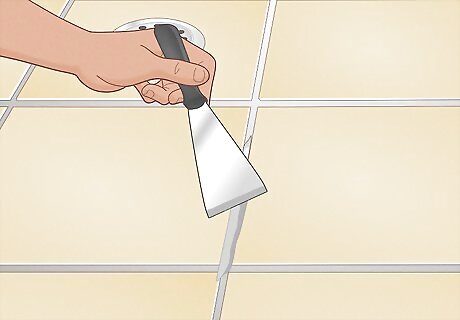
Prepare the tile and grout. Fill in any chipped areas with grout, and let it cure. If you need to seal your tiles, do so now, but take care not to get any sealer on the grout itself. Sealers may prevent the grout paint from sticking. You also want to make sure that the grout is clean, and free of any oil, food, soap, or grime. If you washed the tiles, make sure that they are completely dry before you move on.
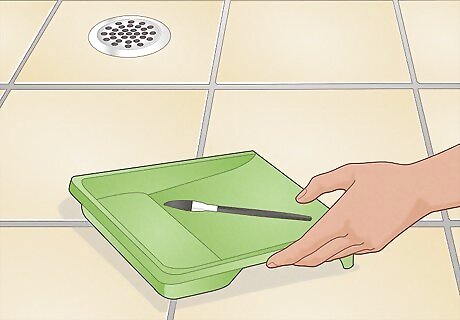
Get a small paint brush and paint pan. The brush should be small enough to slide down the grout lines. You can even use an old toothbrush. A cheap paint brush from the hardware store also works great for this. You will also need a paint pan, or any other small container to pour the paint into. If you are worried about the paintbrush shedding and getting bristles stuck in your grout, use a foam brush instead. Make sure that it is the same width as the grout line. Consider trimming the paintbrush bristles down a little so that they are stiffer. This will give you more control over the brush. Another option is to get a small wheel paint applicator. This will allow you to apply the paint easily and precisely.
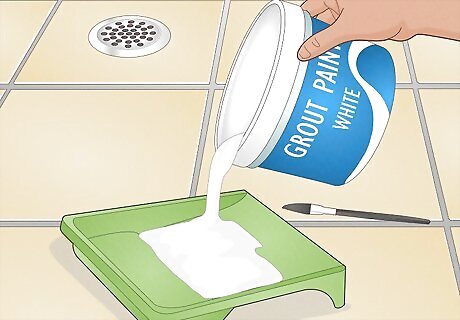
Pour some paint into the paint pan. Pour out less paint than you think you might need. You can always pour out more paint later. If you pour out too much paint, it can dry out before you use it all.
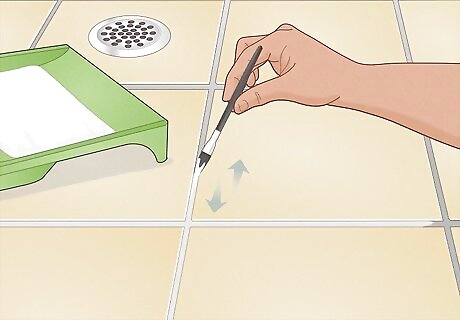
Brush the paint onto the grout using long, back-and-forth strokes. Dip the brush's tip into the paint pan to pick up a small amount of paint. Carefully run the brush along the grout. Be careful not to get any paint onto the tiles. It is possible to remove it, but the less cleanup you have to do, the better. Grout paint will only stick to grout, and can be easily removed from tile. If you are still concerned about this, mask off the tiles using painter's tape.
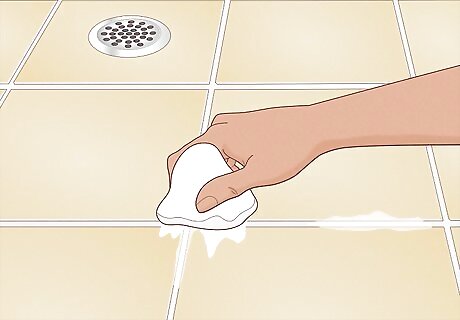
Wipe off excess grout paint from the tiles using a damp cloth. If the paint has dried on the tile, scrape it off using your fingernail. You can also use a pallet knife or an old spoon to scrape the paint off.
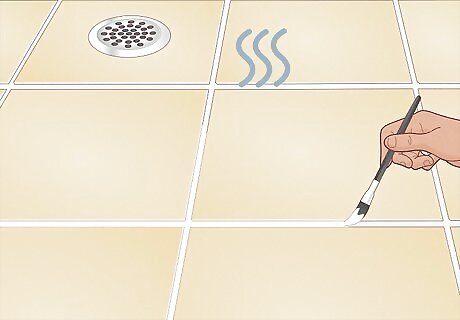
Wait until the paint dries before applying a second coat. Depending on the brand, this can take 1 hour or more. Refer to the label for more specific drying times. The paint must be completely dry before you apply a second coat.
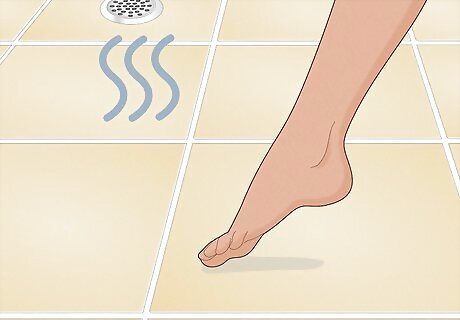
Let the paint cure, if needed before using the area. Depending on the brand you are using, you might need to let the paint cure first before you can use the tiled area. Some paints only need to dry. It is always a good idea to let the paint dry for longer than it indicates you should. This will help to ensure that it is truly dry.
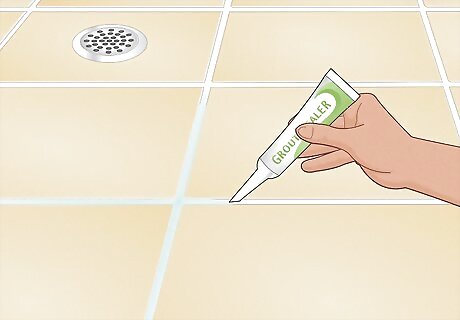
Consider sealing the grout using a grout sealer. This will help your paintwork last longer. It will also help keep the grout clean longer and make it easier to clean later on.














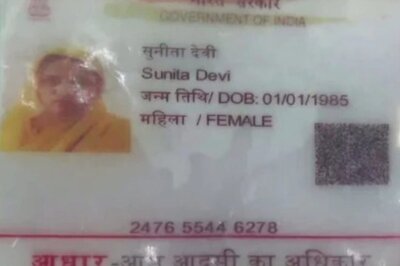





Comments
0 comment